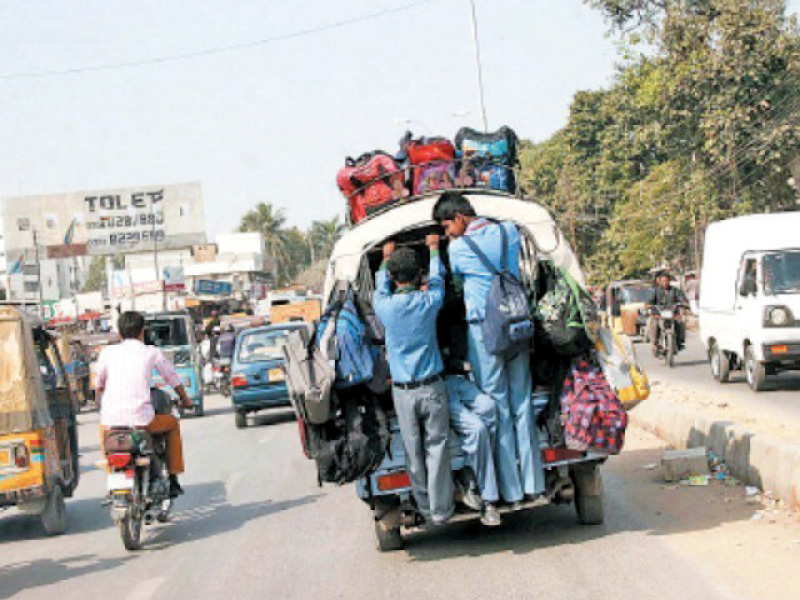
The audience, comprising representatives of the transport department and bus drivers of educational institutions, seemed to find the simple safety device most laughable. The comic relief at the expense of safety methods took place ironically at a workshop, titled 'Defining the roles of stakeholders in delivering road safety and security education', being held in collaboration with the United Nations Development Programme, under the Pakistan Sustainable Transport (Pakstran) project of the Component Implementation Unit, Sindh.
As soon as the chairperson of the NED University's department of architecture and town planning, Dr Raza Mehdi, spoke the words, the audience could not hold back their laughter. Dr Mehdi simply attempted to show the stark reality of the traffic situation in the port city, compared to other mega cities in the world. His emphasis on the use of seatbelts in public transport, however, drew a lot of cynicism from the audience.
With the aid of a power point presentation, titled 'School Zone Safety: Local and International Scenario,' Mehdi attempted to explore the stark differences between the safety measures accorded to academic institutions in Pakistan and in other countries. Before he began the comparative analysis, however, he made a shocking revelation: "Forget the safety of school zones, Karachi does not even have properly marked zones for schools," he said. "Schools are functioning in narrow streets, over nullahs and sometimes besides mechanics’ workshops."
Dr Mehdi added that between school hours, the streets were clogged with school vans, pushcart vendors and among them, the students who were desperately trying to reach home as soon as possible. "This causes accidents and increases the risk for students in view of the prevailing security condition in the city.
Speaking about the standards adopted in developed countries, Dr Mehdi said that there should be signboards ahead of schools, warning commuters about the school zone and marking the speed limit during school hours, which should not be more than 30km/h. "Pedestrian walkways and footpaths are a must near schools," he said. "There should also be exclusive lanes and passages, where buses can drop off and pick up students under supervision."
The component manager of Pakstran, Yar Muhammad Khan, shed light on the regulation and control of vehicles by private schools and colleges in Sindh. He warned private schools that no educational institution could provide transport services to its students without obtaining a route permit from the transport department. He added that emergency exit gates, fire extinguishers and breakable glass were mandatory in school buses.
For the chairperson of the NED University's department of urban and infrastructure engineering, Dr Noman Ahmed, it was no less than a miracle if you reached home safely once you left your home in the morning. "The deteriorating traffic conditions have put all of our lives at stake," he said. "There is no viable framework for transport in the sprawling city." He added that according to the study of the NED University, the footpaths of the city were rapidly diminishing, mainly because residents felt safer to walk on the roads rather than the footpaths.
Published in The Express Tribune, February 22nd, 2015.

1732569774-0/Baymax-(2)1732569774-0-165x106.webp)















COMMENTS
Comments are moderated and generally will be posted if they are on-topic and not abusive.
For more information, please see our Comments FAQ